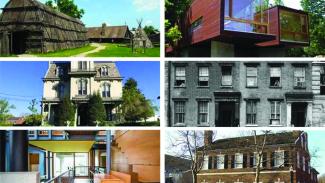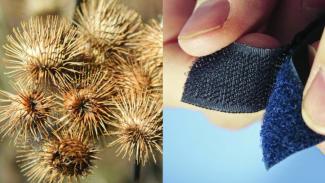Spring 2026 Interiors Electives
The School of Interiors' Spring 2026 electives invite students to engage with a range of topics, from understanding how spaces influence human experience to exploring biomimicry, housing, universal design, and the power of pattern and form. These courses invite students from all disciplines to think critically and creatively about we experience and interact with the built environment. Full course details are listed below.
ID 359/559 (001): Expanding Interior Design
MWF 12:00 - 12:50 p.m. | Instructor: Rebekah Radtke
An introduction for non-majors to the expansive world of interior design, exploring how spaces—ranging from objects to cities—impact our daily lives. Through hands-on activities, lectures, and reflective exercises, students will develop an understanding of how interior environments shape human experience. Students will focus on the body, light, color, materials, and scale from both a personal and global perspective.

ID 359/559 (002): Housing in the U.S.
Tuesdays 3:30 - 4:45 | Instructor: Joe Rey-Barreau
This course will provide a broad overview of housing in the U.S. from various perspectives. There is an examination of the historical development of housing as an object of functional need and individual concern, and the development of housing forms and urban planning influenced by architectural and social theories. The course also will examine how housing in the U.S. has been affected by public policy and political interventions. Lastly, the course will examine the current state of housing design, housing trends, issues related to housing affordability, the effect of climate change on housing and planning, and the likely scenarios for future housing challenges in the U.S. The course will include lectures, visuals, readings, discussions, and field trips.

ID 359/559 (003): Designing With Nature (Observation - Biomimicry - Experimentation)
Tuesdays and Thursdays 12:30 - 1:45 p.m. | Instructor: Nayia Frangouli
Over the years, ubiquitous materials have changed the way hundreds of objects are designed. Velcro exists on account of the observations of Swiss Engineer, George de Mestral, who removed burrs from his pants and dog’s fur then explored alternative potentials for the natural object. This is just one example of biomimicry’s infinite possibilities — learning from nature’s brilliance to design meaningful responses to real world challenges and needs. In this course, students will learn examples of existing biomimicry design in collaboration with an engineering faculty and students. Through cross-disciplinary approaches and the lens of biomimicry, students will conduct experiments that incorporate scientific findings, explore how natural systems can inspire concepts, gain a deeper understanding of LEED, as well as explore healthier materials and methods for making.

ID 359 / 559 (004): Pattern, Form, Immersion
MWF 12:00 12:50 p.m. | Instructor: Ingrid Schmidt
Pattern is intrinsically related to form, light, material, and sequence. It carries cultural and historical meaning that gestures toward era, geography, identity, material practice, and systems of value. This fabrication seminar explores pattern as both design tool and critical framework, inviting students to question disciplinary norms and consider how fabrication techniques shape visual language. Students will engage theory and making in equal measure, using both digital and physical tools to explore patterning as a spatial element. Techniques include laser cutting, airbrushing, tufting, soft goods, and more. The course is open to students 2nd year and above. No textbook fee; making components are partially grant-funded. Experience with Adobe Creative Suite and Rhino is recommended.

ID 359/559 (005): Universal Design in Practice
Tuesdays and Thursdays 12:30 – 1:45 p.m. | Instructor: Erin Alford
Students will explore the principles and applications of Universal Design as it relates to a variety of design scales, spatial types, and geographic locations with specific attention on inclusive, human focused design for all, regardless of age, ability, or other factors that might impact access or interaction with the built environment. In building awareness of Universal Design, students will engage in a series of exercises and discussions to develop empathy and an understanding of the impact of Universal Design as it relates to their own interests and area of study. As students explore the principles of Universal Design, they will practice applying those principles in designing for human diversity.

